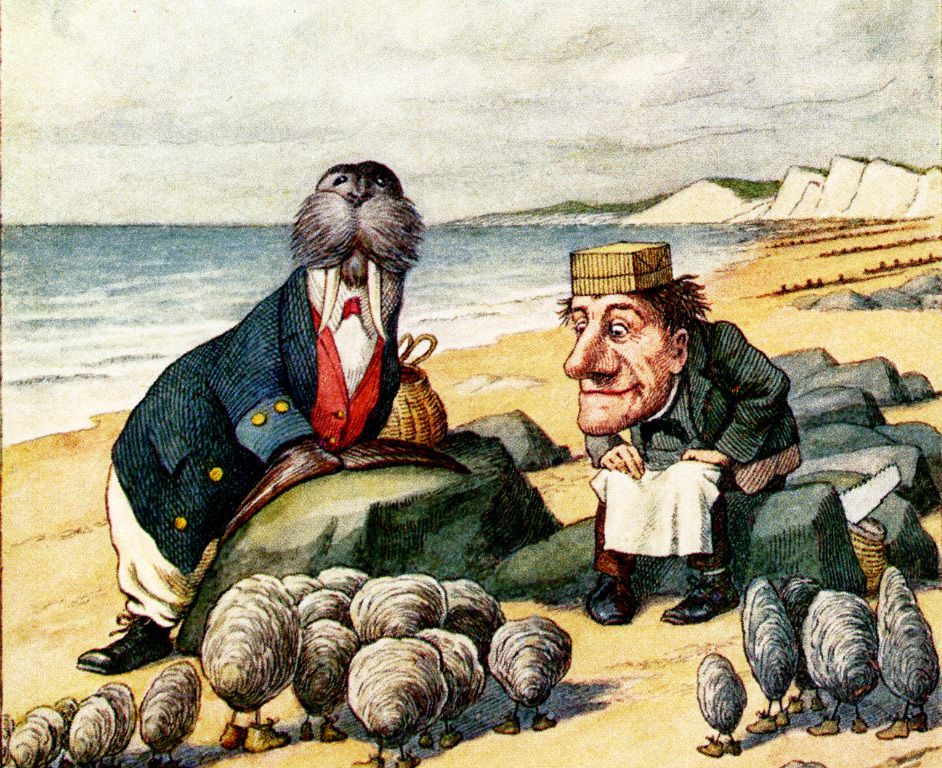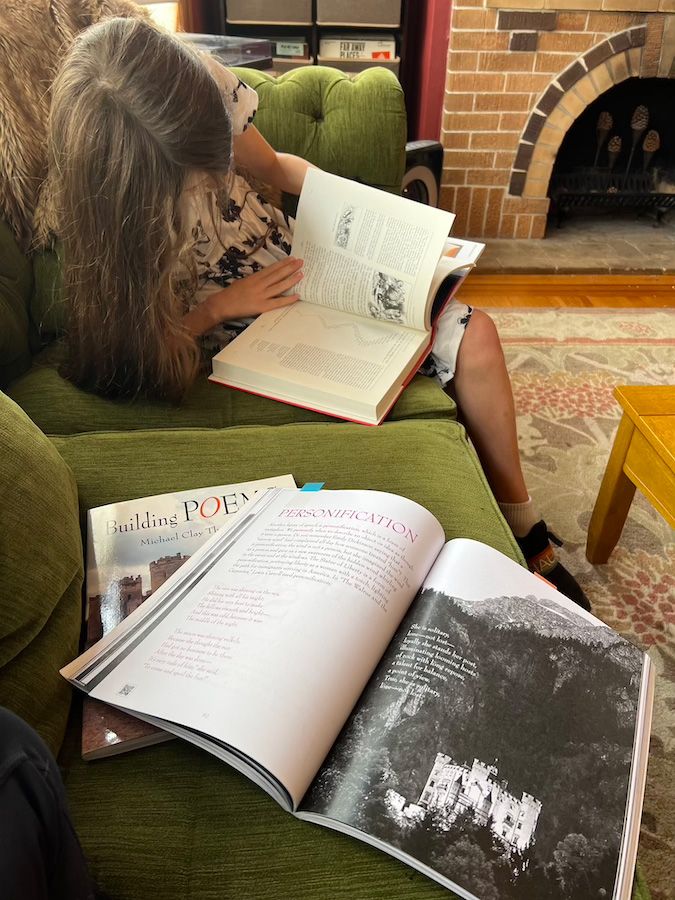An Annotated Alice detour
Alice would approve as we set aside our lesson to chase after a rabbit... or in this case, a walrus and a carpenter.

Earlier this week, we were studying poetry as part of our Michael Clay Thompson curriculum. As an example for the concept of personification, MCT uses the opening stanzas of "The Walrus and the Carpenter," from Lewis Carroll's Through the Looking-Glass:
The sun was shining on the sea,
Shining with all his might;
He did his very best to make
The billows smooth and bright—
And this was odd, because it was
The middle of the night.
The moon was shining sulkily,
Because she thought the sun
Had got no business to be there
After the day was done—
"It's very rude of him," she said,
"To come and spoil the fun!"
Wanda said she already knew this poem—and liked it quite a bit. She wanted us to talk more about it, and asked if she could get out our copy of The Annotated Alice, by Martin Gardner.
If you're not familiar with The Annotated Alice, well, this is an exciting moment for you. It's the only way Alice in Wonderland should be read, in my opinion. It has the original text of both Alice's Adventures in Wonderland and its sequel, Through the Looking-Glass, presented alongside tons of deeply researched annotations that provide critical context. I mean, the book is basically a series of inside jokes between an Oxford math teacher and some little kids who lived on campus. Part of its reputation for nonsense comes from modern readers being so far removed in time and place from the original audience, so annotations add much to the understanding of the books.
The way I've incorporated The Annotated Alice into our learning is... uh, I haven't. I haven't used it as a read-aloud, I haven't assigned it as reading, I haven't bought any Alice lesson packs, none of that. I even skipped on the Michael Clay Thompson teaching guide for Alice in Wonderland. I just... own it. And left it out. And at some point she TOOK THE BAIT!
And thus, she piped up about "The Walrus and the Carpenter," explaining that she'd read it in The Annotated Alice, even going so far as to say it's her favorite poem (!), and asked if we could spend some time on it.
YES. OH HELL YES.

We read the whole poem carefully, and talked about what we liked about it: the parts that made us laugh, its iambic meter, the bits of language in it that are particularly clever. Wanda said she really liked how the poem challenged Alice to be puzzled over what matters more: one's intentions, or the consequences of one's actions? (She didn't notice that on her own, that was highlighted by one of those handy-dandy annotations, but she was familiar with the pondering thanks to The Good Place.)
I became rhapsodic, thinking about how 150 years ago Lewis Carroll surely had a little giggle to himself over the idea he came up with about the oysters' shoes:
But four young Oysters hurried up,
All eager for the treat;
Their coats were brushed, their faces washed,
Their shoes were clean and neat—
And this was odd, because, you know,
They hadn't any feet.
It made me giggle, anyway. Think of that! He had a giggle, and it started in his head, and then he got the giggle-inducing idea on paper. He probably couldn't wait to share it with the young girls and see their reaction, and maybe he thought about the reaction of a few other readers. But did he dare to imagine that 150 years later, on the other side of the planet, his giggle would still be echoing? That giggle has immortality, just a silly little giggle about imagining oysters with no feet, but with shoes. The way art is able to preserve and transport a thought, and the emotion that came with it, across ages... it leaves me reeling.
I love that we're free to follow these rabbit trails as they come up. We did eventually find our way back to our lesson about personification, but making the time for detours like this—that's Wonderland.
Speaking of the importance of context, this article from Smithsonian Magazine is a helpful illumination on how history sees Lewis Carroll's relationship to the young girls who inspired his writing.

